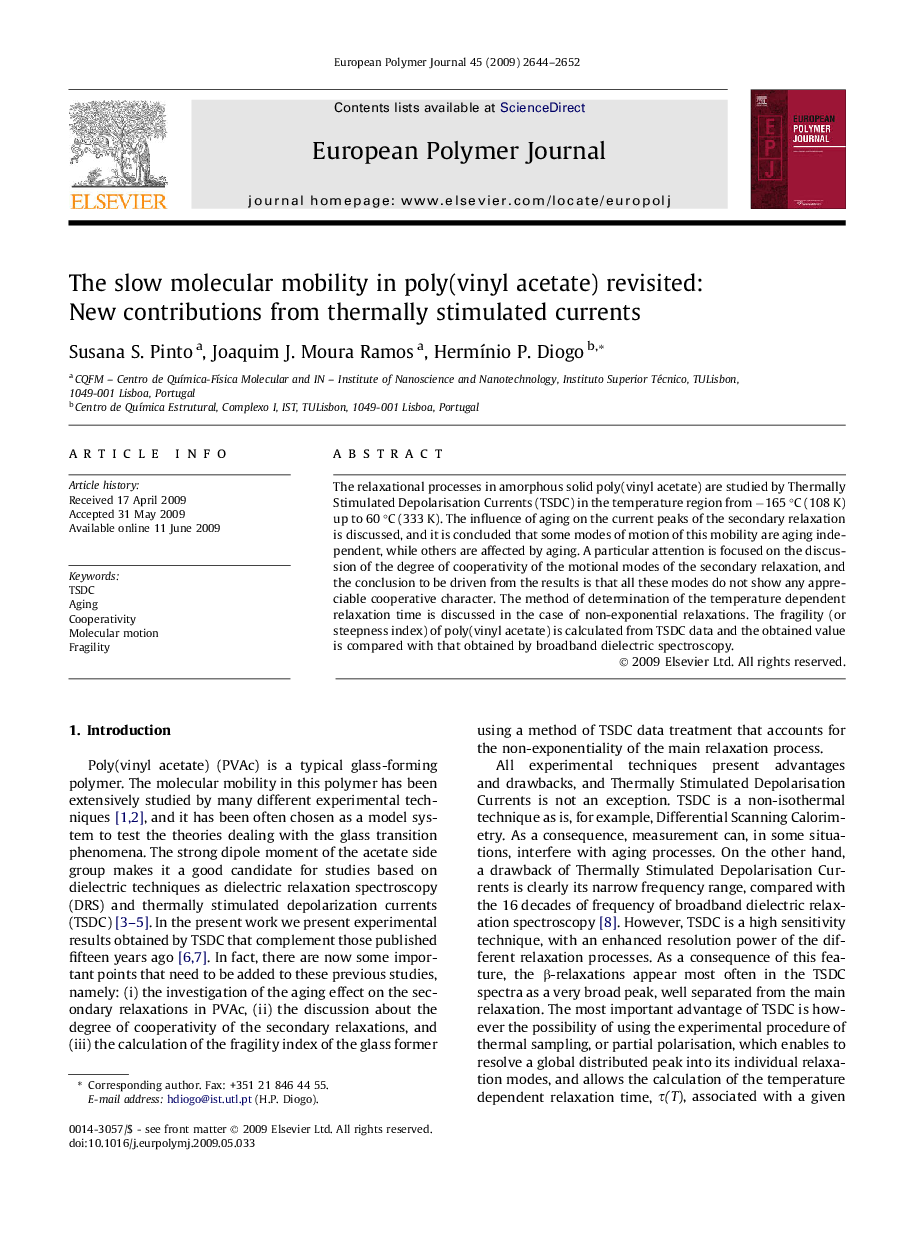| Article ID | Journal | Published Year | Pages | File Type |
|---|---|---|---|---|
| 1400760 | European Polymer Journal | 2009 | 9 Pages |
Abstract
The relaxational processes in amorphous solid poly(vinyl acetate) are studied by Thermally Stimulated Depolarisation Currents (TSDC) in the temperature region from â165 °C (108 K) up to 60 °C (333 K). The influence of aging on the current peaks of the secondary relaxation is discussed, and it is concluded that some modes of motion of this mobility are aging independent, while others are affected by aging. A particular attention is focused on the discussion of the degree of cooperativity of the motional modes of the secondary relaxation, and the conclusion to be driven from the results is that all these modes do not show any appreciable cooperative character. The method of determination of the temperature dependent relaxation time is discussed in the case of non-exponential relaxations. The fragility (or steepness index) of poly(vinyl acetate) is calculated from TSDC data and the obtained value is compared with that obtained by broadband dielectric spectroscopy.
Related Topics
Physical Sciences and Engineering
Chemistry
Organic Chemistry
Authors
Susana S. Pinto, Joaquim J. Moura Ramos, HermÃnio P. Diogo,
